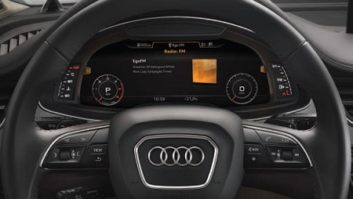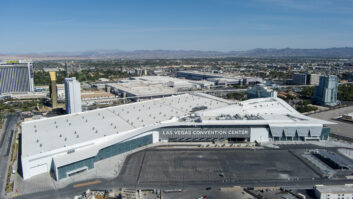The following story appeared in the recent Radio World eBook “AM Translators: What’s Next?”

The author is vice president of engineering for K-LOVE and Air1.
When I built my first FM translator way in the 1980s, the process was simple. We told our consultant where we wanted to go; after his application was granted, all we had to do was finalize the lease with the tower owner and order the equipment. The chief engineer and I put everything we could think of in the back of the pickup, drove to the site and spent a day or two hanging antennas, running coaxes and connecting things. And we smiled as we listened to our handiwork on the way home. Easy peasy.
The last few decades have not been kind to simplicity. Thousands of applications filed, granted and built have made the band far more congested. Liability concerns have caused landlords to care about more than whether your antenna will fit and not cause interference. Budget-starved communities have discovered that zoning and permitting fees can help keep a town limping along.

Sam Wallington
EXPECTATIONS
Let’s start with the expectation and hope that a 250-watt (or less) fill-in translator will cover the famous town of “Everywhere I Want.” This usually means “at least to the City Limits sign in every direction, with an extra-great signal at Big Advertiser Bob’s house, commute and place of business.”
Things may work out that way, but it is much more likely that the signal will be noisy or nonexistent over some of the extended market, with increased interference from others. Realistically, 250 watts will never perform as well as 6 — or 60 — kilowatts.
You should do preliminary work to determine likely coverage. Just because a translator clears the protected contour of a station does not mean the latter doesn’t have significant coverage in the proposed translator’s area.
There are computer models that just about any FCC consultant can use to evaluate real-world, interference-free coverage. If modeling is not in your budget, at least take a drive listening to the proposed frequency. Understand where other signal(s) come in well and where the frequency is open.
Ideally, because car radios and car antennas vary, drive the frequency using multiple vehicles. An in-glass antenna may not hear another signal while a fender-mount antenna might. Do this early to help manage expectations or prompt a change to a different tower or frequency.

If locating inside a real building is not an option, consider placing your translator equipment in a small outdoor shelter or NEMA enclosure.
PLAN TWICE, APPLY ONCE
Once the translator application is ready to file, double-check it carefully. Frustration will reach new levels when you discover that coordinates on the application and the tower coordinates are different, especially if vastly different — or in the middle of a lake!
An easy way is to take a GPS device to the site (with landlord permission). It should be within +/- 2 seconds, the error potential of a normal GPS after about 25 minutes of being in one place. Make sure your GPS is set to NAD27 coordinate datum rather than NAD83 or WGS84, etc., or you’ll get a false result. The FCC uses NAD27 for broadcast.
You can also use Antenna Structure Registration (ASR) information to validate the parameters, but remember that ASR data uses NAD83 coordinates, so you’ll need to convert the coordinates that are on the FCC Form 349 application.
GPS units are not very accurate on elevation, so you’ll need to verify elevation using other means. If the application has already been filed when you find an error, file an amendment to the pending application.
Tower owners, the ones controlling the “vertical real estate,” will want a few answers: Will your translator cause interference to any of their other tenants? Will your antenna(s) and coax over-stress the tower? Will you pay a fair-market rent rate?
To resolve interference concerns, they may ask you to perform an intermodulation interference or other study. Most consultants can handle the studies but may require information from the tower owner such as the transmit and receive frequencies of other tenants. The tower stress question may require you to pay an engineering firm for a structural analysis (or to update the previous one); and, of course, you will have to come agree on a rent rate.

This antenna creates a very directional signal.
Many tower owners will expect you to handle — or cooperate in obtaining — zoning and permitting approval. You can hire someone to do a “scrub” of local ordinances to determine what, if any, zoning adjustments or permits will be required and how much these might cost. If you have time, you can go to the community zoning and permitting (Z&P) offices yourself, explain your proposal and learn what the process, costs and timeline look like. Some jurisdictions are relatively simple and inexpensive (maybe even have no requirements for your proposal), while others can have complex and expensive processes that take months or even years to navigate.
Because of the potential for delaying your project (perhaps even past the CP expiration date), investigate Z&P requirements early in the process. The FCC generally is not inclined to extend CP expiration dates for Z&P issues.
While we are on the subject of tower owners, many now require specific tower crews or crews that meet their criteria for work on the tower. At issue is ensuring that the crew is trained, equipped and experienced, as well as demonstrating that sufficient liability insurance is in place. With most landlords, don’t expect your second cousin to show up with a ratty climbing belt and be given approval to climb.
The same goes for other skilled trades such as electrical work around the facility. Even though your engineer knows how to spell NEC (National Electrical Code), he or she may not be allowed to do electrical work at the site unless properly licensed. Depending on the jurisdiction and the landlord, you may be required to hire union labor even to move your equipment into the building, especially if it is a rooftop site.

A map of a translator coverage area in San Francisco using RadioSoft ComStudy software.
ENCLOSURE OPTIONS
Some transmitter buildings are beautiful inside and out — clean, secure and easy to access year-round, equipped with properly filtered air conditioning and/or heat, generator backup power, on-site comfort facilities and various telecom services.
Many sites, however, lack one or more of these amenities. Plan either to upgrade the non-negotiables (such as adding air conditioning) or to upgrade the equipment (such as making sure it can handle the 150-degree indoor temperature during the summer).
If locating in a real building is not practicable, consider placing your translator equipment in a small outdoor shelter or NEMA enclosure, waterproofed and ventilated. Remember that temperature inside the box can be higher than ambient temperatures; the gear will need to be able to handle that. You can buy outdoor enclosures with air conditioning, though they are relatively expensive. Cutting up-front costs by buying cheaper air conditioner (A/C) units will mean repairing or replacing the A/C equipment more frequently, raising operating costs. Additionally, when it’s time to access or service the equipment, weather has much more of an impact than if the equipment were inside a building. There’s nothing like trying to keep a translator dry while opening the box in a heavy rainstorm.
INTERFERENCE TIPS
Eventually your CP is granted, your landlord’s requirements are met, your equipment is assembled and you turn on the translator. Yay! All done, right?
Not quite. The application for license (Form 350) needs to be on file. Also, your translator now is subject to the FCC rule about actual interference (47 C.F.R. 74.1203). It basically states that the translator cannot stay on if it causes any interference to (among other things) a regularly-used broadcast signal from someone else — even if that other signal comes in poorly.

Your translator may not be the only FM on a site. Note translator antenna near the bottom of the closer tower.
There are proposals before the FCC to try to give more protection to translators, but for now, interference can be a death knell to your translator. I lean toward not promoting the new translator for at least a month to give time for any interference complaints to surface, though occasionally complaints show up months later. Be careful about pushing your audience to a signal before you are reasonably sure it will be stay the air long-term.
If you do receive an interference complaint, hopefully it is informal — a call from a listener or someone at the other signal. It is easiest (and cheapest) for all parties to deal with complaints at this level. Once the FCC or attorneys get involved, it costs everyone more time and money, though this may be necessary if informal efforts do not produce reasonable results in a timely manner.
If you receive a complaint, deal with the problem immediately. Don’t pretend it doesn’t exist. Instead, investigate by talking to the affected listener(s), driving in the affected area(s) with various radios, and so on.
Determine if the complaint is legitimate. Is it really about a “regularly used” signal? Or is it from the brother of the disgruntled program director across town?
Next determine the scope of the problem. Is it widespread or in a very small area? Are there many complaints or just one?
If there are only a few complaints, you may be able to provide better radios or antennas to the people affected, resolving the problem. Is a better frequency available? Does reducing the power of the translator solve the problem? If so, is the translator still usable elsewhere? That may signal the possibility of filing to change the translator’s transmit antenna to directionalize the translator away from the problem area. Meantime, you may need to shut the translator off until you have resolved the situation.
Ultimately, the goal of a new FM translator is to improve your station’s coverage, increase listenership and improve income. Even though there are more hurdles now, it is still possible to use a translator or three to strengthen your ability to reach your audience.
Sam Wallington and his team at Educational Media Foundation have built a nationwide network of more than 900 signals. He participates in the NAB Radio Technology Committee and the Society of Broadcast Engineers.











